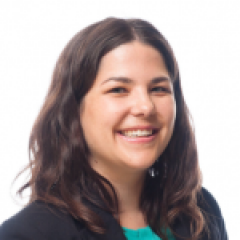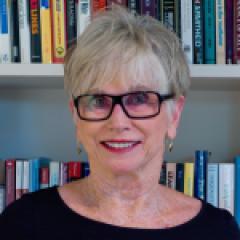Answer Sheet: Betsy DeVos May Not Recognize It, But These Public Schools Work

(iStock)
If you listen to Education Secretary Betsy DeVos talk about traditional public schools, you could get the impression that they are pretty much all the same. She repeatedly talks about how they are designed in “old factory model” that worked decades ago but no longer meets the individual needs of students. That is why, she says, she wants to expand alternatives in the form of charter schools and programs that use public funds to pay for private school education.
On a stop at a school in Wyoming this fall, DeVos said:
“For far too many kids, this year’s first day back to school looks and feels a lot like last year’s first day back to school. And the year before that. And the generation before that. And the generation before that! That means your parent’s parent’s parents! Most students are starting a new school year that is all too familiar. … They follow the same schedule, the same routine—just waiting to be saved by the bell.”
Surely there are traditional public schools — as well as charter schools and private schools — that do the same thing year in and year out, and fail to inspire students. But there are many that work well for students. And despite what DeVos says, traditional public schools or their districts are not all alike, not even close. There are many schools in traditional public school districts that have found new ways to meet the needs of students — among them, what are known as “community schools.”
This post looks at the value of community schools. It was written by the co-authors of a new study just released titled “Community Schools as an Effective School Improvement Strategy: A Review of the Evidence.” They are Julia Daniel, a Ph.D. candidate in educational foundations, policy and practice at the University of Colorado Boulder; Anna Maier, a research and policy associate at the nonprofit Learning Policy Institute; and Jeannie Oakes, presidential professor emeritus in educational equity at UCLA. The new study is being published by the California-based Learning Policy Institute, which was founded by the renowned Stanford University educator Linda Darling-Hammond and conducts independent, high-quality research to improve education policy and practice.
By Julia Daniel, Anna Maier, and Jeannie Oakes
At Oakland International High School, 25 percent of students — virtually all of whom are recent immigrants — arrived in the United States as unaccompanied minors. Some have lost family members to violence; some come to school hungry; some face risks simply getting to and from school. All are English learners, most live in poverty, and some live in the United States without their families.
Across the country, most students like them experience limited learning opportunities and barriers to success at school. But Oakland International students thrive at surprisingly high rates. Two-thirds of those surveyed in 2015-16 said they are “happy at school,” compared to just over half of other Oakland high school students.
Careful internal tracking of the five-year graduation rate for the class of 2015 shows a 72 percent success rate — high for this extremely vulnerable population (the figure includes non-traditional paths such as completing credits at adult school or proceeding directly to community college and earning an associate’s degree).
The school also does a remarkable job of preparing and sending students to college. More than half of Oakland International’s 2014-15 graduating students (51 percent) took and passed the rigorous “A-G” courses required for admission to California state universities, compared to 24 percent of their English learner peers districtwide and 46 percent of all Oakland Unified School District students. As far as attending college, internal tracking shows that enrollment rates for Oakland International students reached 68 percent by 2014, outperforming the 2009 state average of 52 percent for English learners (the most recent statewide data available).
Why are Oakland International students more engaged and succeeding by many measures at higher levels than students in similar circumstances? Why do they take more advanced coursework? Why are they more likely to attend college? One answer is that their school is a community school — one of hundreds across the country improving education in communities facing concentrated poverty.
What is a community school?
Community schools are gaining national attention as cities such as Oakland, Chicago, and New York are establishing them districtwide. But the approach is not well-understood. The popular perception is that community schools differ from others only in that they provide wraparound services, such as health and dental care, counseling, and social supports.
That is surely part of what community schools do. Among the supports available to students and families at Oakland International are free legal representation if they are facing deportation, afterschool tutoring, ESL classes for parents (provided by the nonprofit Refugee Transitions), mental health and mentoring services at the school wellness center, medical services at a nearby high school health clinic, and an afterschool and weekend sports program run by Soccer Without Borders.
But, providing social supports is not all that community schools do. Our review of the research found that successful community schools use four core strategies. In addition to integrated supports, such as health care and social services, they expand learning time and opportunities, engage families and communities in meaningful ways, and employ collaborative leadership and practices that build a culture of professional learning and shared responsibility for students’ success. Across the 143 well-designed studies we examined, we found all four features key to improving student engagement and learning.
The studies we reviewed also show that good implementation matters. Rather than using a one-size-fits-all model, community schools work best when families, community members, and educators work together to make the programs and services match local needs and assets. Cross-sector teams of partners collaborate and share responsibility for student outcomes, using disaggregated data to consider the assets and needs of different student groups. Together, they build a coordinating infrastructure—including a dedicated full-time manager—to oversee the carefully planned provision of school and community resources.
Creating powerful and engaging learning opportunities
Even as students’ physical and mental well-being is supported at community schools, so is their learning. Academic learning is connected to community activities and issues — what some call “community-based learning.” This creates opportunities for deeper or more authentic learning than traditional “skill and drill” instruction, because it integrates academic content with students’ prior knowledge and experiences, engages them in problem- or project-based instruction, and helps them connect academic content and real-world contexts.
Community-based learning also provides learning opportunities beyond the traditional school day. Expanded learning time includes additional academic instruction, individualized support, and enrichment. Although many after-school activities are aligned with classroom instruction, they often emphasize real-world learning and community problem solving — providing ways for students to apply classroom learning in new contexts.
At Oakland International, students work all year developing a portfolioaround topics relevant to them, for example U.S. immigration, college access, or social justice issues. They develop artifacts such as research journals, bibliographies, student-produced videos and graphics, presentations, and research papers to share their academic findings with audiences of peers, teachers, family members and community members. The portfolio project enables students to develop advanced academic skills and demonstrate what they have learned in more meaningful ways than on a single test. When presenting, they practice their English skills, showcase and reflect on what they have learned and answer audience questions. Their work is graded with rubrics, and students have multiple opportunities for revision.
Families, communities and educators collaborate to support learning.
Oakland International teachers and community school staff conduct at least two home visits each year to build relationships with families, and encourage and support parent participation on school teams that develop programs and determine budgets. Staff also participate in immersive “community walks” designed by parents, students, and community leaders where they visit important landmarks and meet with community leaders and families.
Valuing the knowledge of families and community members can infuse the school climate with trusting relationships that support student learning and well-being.
Community school coordinators and principals make decisions drawing on the local knowledge of multiple stakeholders. Teachers work in learning communities to make instructional improvement a schoolwide focus. Partner organizations help align expanded learning time and opportunities with classroom instruction. Working together toward a shared vision, all are more invested in the student outcomes they help to shape.
Oakland International works closely with community based organizations to determine the best supports for students and families. Input comes from the Community School Advisory Committee (the site leadership team) and the Coordination of Services Team (the primary link between students and community partners). Team members review student attendance and other data sources on a weekly basis to determine which students would benefit from case management, home visits, or other interventions.
In short, community schools like Oakland International High School address educational inequities because they address out of school barriers to learning and they provide challenging and engaged learning opportunities in classrooms and beyond. When implemented with family and community engagement and collaborative practices, the four strategies reinforce each other and increase the capacity of the school to become places where students learn and thrive.
This blog post has been shared by permission from the author.
Readers wishing to comment on the content are encouraged to do so via the link to the original post.
Find the original post here:
The views expressed by the blogger are not necessarily those of NEPC.



